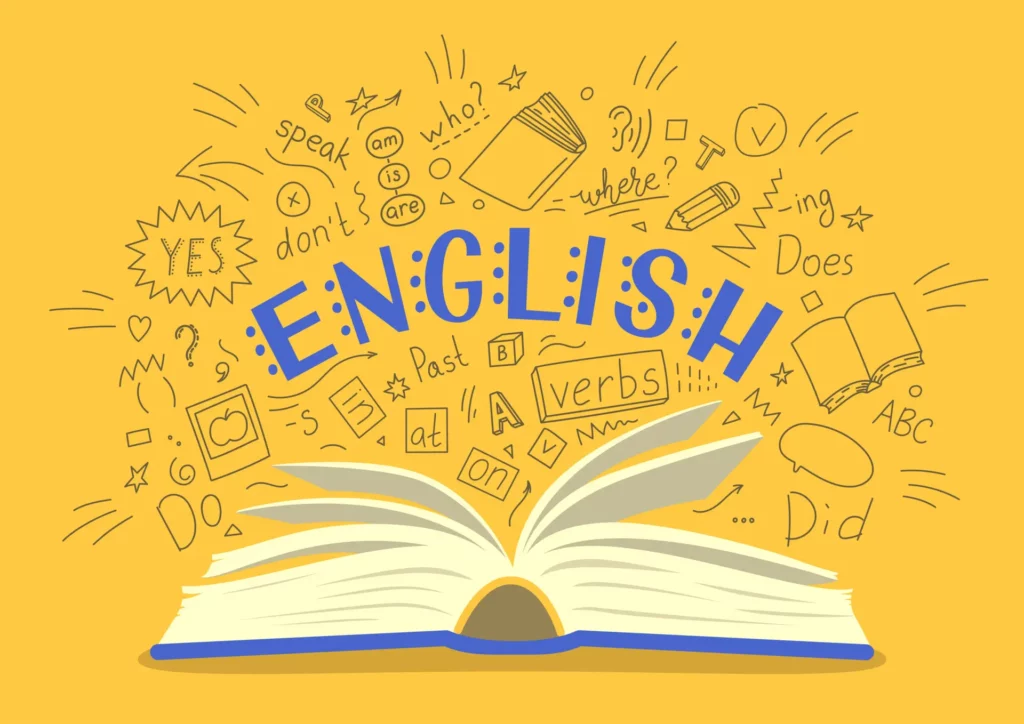The Power of Concise Writing
The power of concise writing: In an era of information overload, succinctly conveying ideas is more valuable than ever. Concise writing, characterized by brevity and clarity, cuts through the noise, capturing and retaining the reader’s attention. This writing style respects the reader’s time and enhances the writer’s ability to communicate effectively. The power of concise writing lies in its ability to distill complex ideas into their essence, making them accessible and engaging.
The benefits of concise writing extend across all communication domains, from academic papers to business reports and emails to creative storytelling. Concise writing improves clarity, ensuring unnecessary verbiage does not obscure the message. It strengthens impact, as a focused message is more likely to resonate with readers. Most importantly, it enhances reader engagement, as a concise text is more approachable and accessible to digest.
This guide aims to illuminate the path toward mastering concise writing. By exploring strategies to refine your writing style, you’ll learn to eliminate wordiness, choose precise expressions, and structure your writing for maximum effect. Whether you’re a student, a professional, or a creative writer, the ability to write concisely will empower you to communicate more effectively, making your ideas stand out in a crowded world.

Part 1: Understanding Concise Writing
Characteristics of Concise Writing
Several vital characteristics mark concise writing:
- Simplicity: It uses straightforward language, avoiding unnecessary jargon and complex expressions that could confuse the reader.
- Clarity: Each sentence conveys a clear and specific idea, ensuring the reader can quickly grasp the intended message.
- Brevity: It is brief, eliminating redundant words and phrases that do not add value to the message.
Understanding these characteristics is the first step in learning how to write concisely. They serve as guiding principles, helping writers to critically assess their work for clarity, simplicity, and brevity.
Common Obstacles to Conciseness
Several common obstacles can hinder conciseness in writing:
- Redundancy: Repeating the same information in different ways unnecessarily inflates the text and dilutes the message.
- Verbosity: Using more words than necessary to express an idea can make writing cumbersome and challenging.
- Unclear Thinking: A lack of clear understanding of the message one intends to convey often results in convoluted and verbose writing. Clear and concise writing starts with clear thinking.
Overcoming these obstacles requires awareness and deliberate practice. By identifying and understanding the common pitfalls of verbose writing, you can refine your writing process, focusing on expressing your ideas as efficiently and effectively as possible.
Recognizing the characteristics of concise writing and being aware of the common obstacles to achieving conciseness are fundamental steps in mastering this valuable skill. As we delve deeper into the strategies for eliminating wordiness and enhancing clarity in the following sections, keep these foundational principles in mind. The journey to concise writing is both a practice in self-editing and a more profound exercise in thinking clearly and purposefully about what you wish to communicate.

Part 2: The Art of Eliminating Wordiness
To achieve concise writing, one must become adept at identifying and removing unnecessary words and phrases that add bulk without substance. This section explores strategies to refine your prose, making your writing sharper and more impactful.
Identifying Redundancies
Redundancies occur when a writer says the same thing more than once, albeit in different ways. Common examples include phrases like “advance planning” or “end result,” where one word suffices.
- Strategy: Read your writing critically to spot phrases repeating the same idea. Ask yourself if removing a word changes the meaning. If it doesn’t, it’s likely redundant.
Simplifying Language
Complex language doesn’t necessarily make writing more sophisticated. In many cases, simpler words achieve greater clarity and make the text more accessible.
- Strategy: Replace complex words or phrases with simpler alternatives. For example, use “use” instead of “utilize,” “help” instead of “facilitate,” and “about” instead of “in the vicinity of.”
Active vs. Passive Voice
The passive voice often makes sentences longer and the subject of the action unclear. While it has its place, the active voice tends to make more direct and dynamic statements.
- Strategy: Convert passive constructions into active ones where possible. Instead of writing, “The ball was thrown by John,” write, “John threw the ball.”

Part 3: Strategies for Concise Writing
Developing concise writing skills requires intentional practice and a toolkit of strategies to sharpen your prose. This section offers techniques to cultivate brevity and clarity in your writing.
Planning and Outlining
A clear plan or outline helps you focus on your main points, preventing meandering thoughts and excessive wordiness.
- Strategy: Before writing, outline your main ideas and how you intend to support them. This roadmap will help you stay on topic and avoid including irrelevant details.
Revision Techniques
The key to concise writing often lies in the revision process, where you can trim the excess and clarify your thoughts.
- Strategy: After writing your first draft, review it to cut down the word count. Look for sentences that can be combined, words that can be eliminated, and paragraphs that can be simplified without losing their essence.
- Eliminate Filler Words: Words like “just,” “very,” “really,” and “quite” often add little to the meaning of a sentence and can be removed.
- Tighten Phrases: Convert phrases into single words when possible. Change “in order to” to “to,” “at this point in time” to “now,” and “despite the fact that” to “although.”
Practice Exercises
Regular practice is essential for mastering concise writing.
- Rewriting Exercises: Take a paragraph from an existing piece of writing — perhaps a news article or a piece of your work — and challenge yourself to rewrite it in half the number of words without losing the core message.
- Summarization: Practice summarizing longer texts, focusing on distilling the main ideas into a concise format. This will improve your ability to write concisely and enhance your comprehension and retention of material.
By incorporating these strategies into your writing routine, you’ll develop the ability to express yourself more succinctly and effectively. Eliminating wordiness and practicing concise writing are iterative processes. Over time, they become intrinsic to your writing style, leading to more transparent, persuasive communication that resonates with your audience.

Part 4: Applying Concise Writing in Different Contexts
Concise writing is a versatile skill that enhances clarity and engagement across various forms of communication. Whether drafting an academic paper, compiling a business report, or weaving a narrative, the principles of brevity and clarity can significantly elevate your writing.
Academic Writing
In academic writing, conciseness helps present arguments and analyses clearly and persuasively. It allows readers to grasp complex ideas without wading through dense prose.
- Strategy: Focus on presenting evidence and arguments directly. Avoid over-elaboration and ensure each sentence contributes to your thesis or research question.
Business Communication
In the business world, where time is often at a premium, concise writing ensures that messages are quickly and easily understood.
- Strategy: In emails, reports, and proposals, get straight to the point. Use bullet points for easy readability, and avoid jargon unless it adds value.
Creative Writing
Conciseness can enhance narrative focus and emotional impact, even in creative writing, by removing distractions and emphasizing key details or actions.
- Strategy: Practice “trimming the fat” from your narrative, focusing on your story’s or message’s essential elements. This can heighten drama and deepen reader engagement.

Part 5: Tools and Resources for Concise Writing
Several tools and resources can support your journey towards more concise writing, providing feedback and insights to refine your prose.
Writing Tools and Software
Grammar and style checkers like Grammarly, Hemingway App, and ProWritingAid analyze your writing for wordiness, passive voice, and readability, offering suggestions for simplification and conciseness.
Books and Online Resources
- Books such as “The Elements of Style” by Strunk and White, and “On Writing Well” by William Zinsser, provide timeless advice on clear and concise writing.
- Online resources, including writing blogs and websites like the Purdue OWL (Online Writing Lab), offer tips, exercises, and examples to practice and improve your writing skills.
Concluding the Power of Concise Writing
The power of concise writing lies in its ability to convey messages with clarity and impact, resonating with readers across various contexts. By mastering the art of eliminating wordiness, you can enhance the effectiveness of your communication, making your ideas more accessible and engaging. Through academic papers, business communications, or creative storytelling, concise writing fosters a deeper connection between your words and your audience.
Embracing the strategies outlined in this guide—from planning and revision techniques to the thoughtful application of concise principles in different writing contexts—will equip you with the skills to communicate more efficiently and effectively. The journey to concise writing is continuous, shaped by practice, feedback, and a commitment to clarity.
As you incorporate these techniques into your writing practice, remember that concise writing benefits your readers and sharpens your thinking. It forces you to consider precisely what you want and the best way to say it. Ultimately, the pursuit of conciseness is not just about brevity but about deepening the impact and understanding of your writing, one carefully chosen word at a time.

Further Exploration
For those eager to dive deeper into the intricacies of English, countless resources await. From comprehensive grammar guides to interactive language learning platforms, the tools at your disposal are more accessible than ever. Engage with these materials, challenge yourself with new exercises, and remain curious and open to discovery. We offer a line of comprehensive grammar and punctuation courses and feature a mastery quiz bundle to cement your further mastery of grammar and punctuation. Feel free to access the endorsed resources below to enhance your learning experience.





